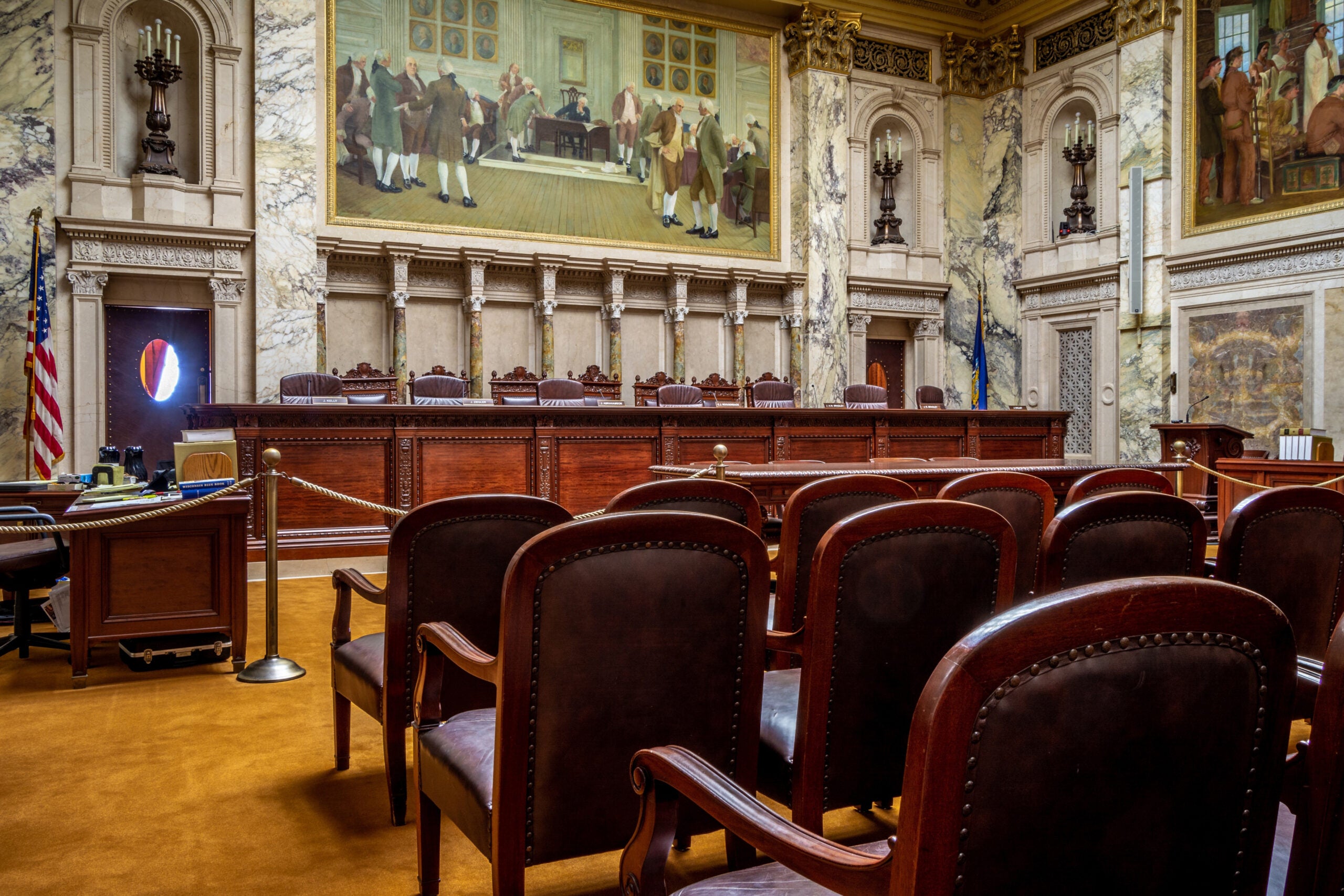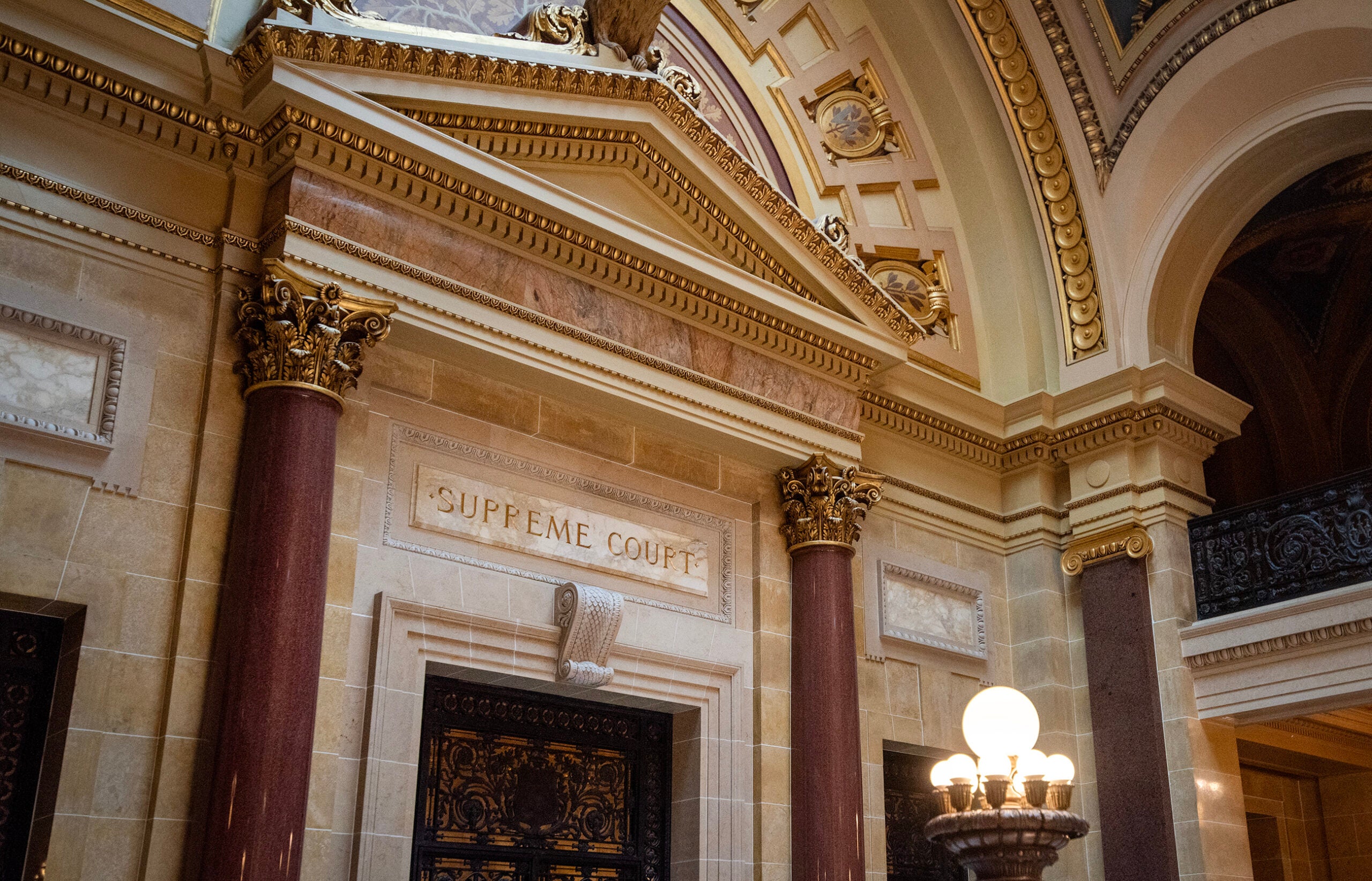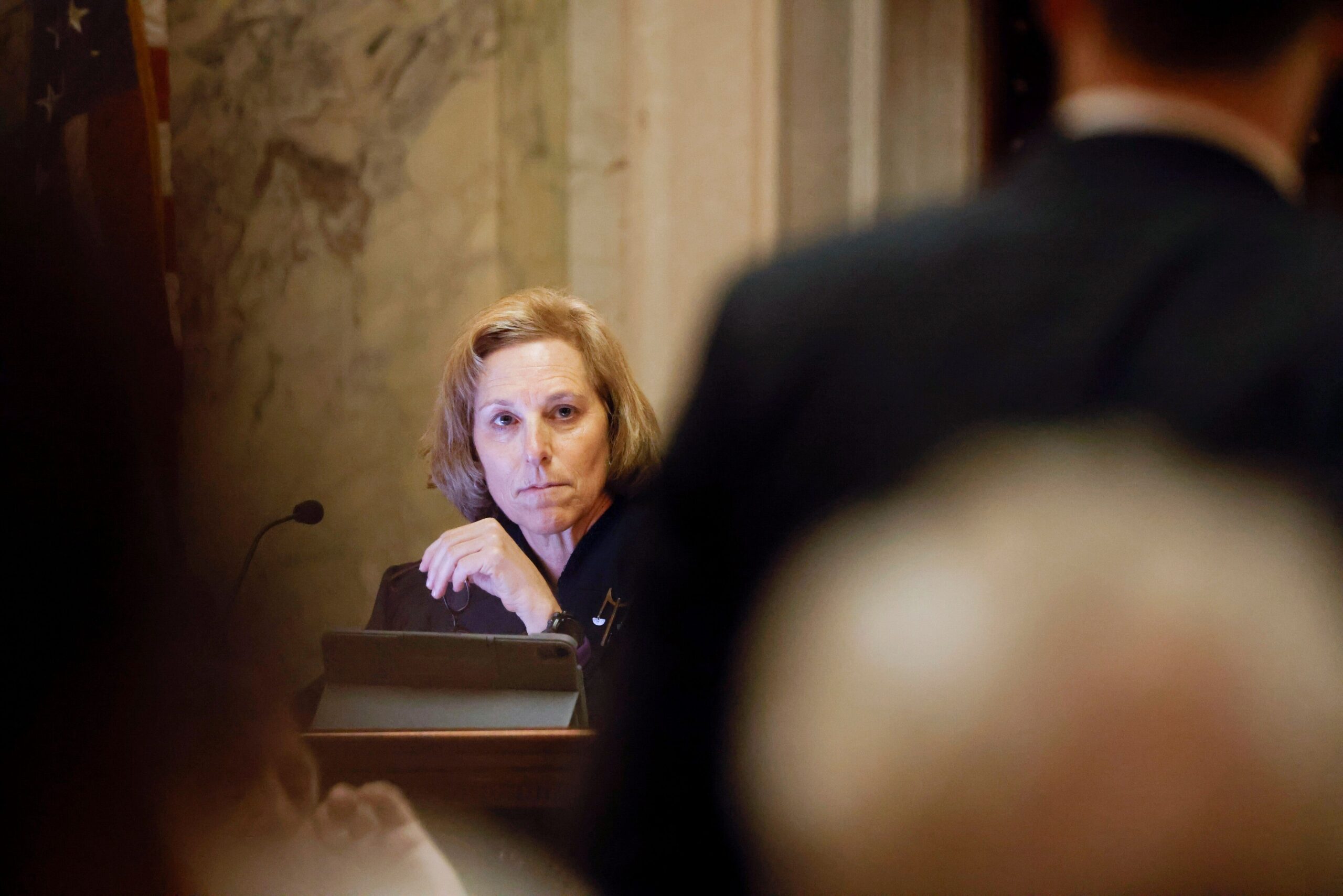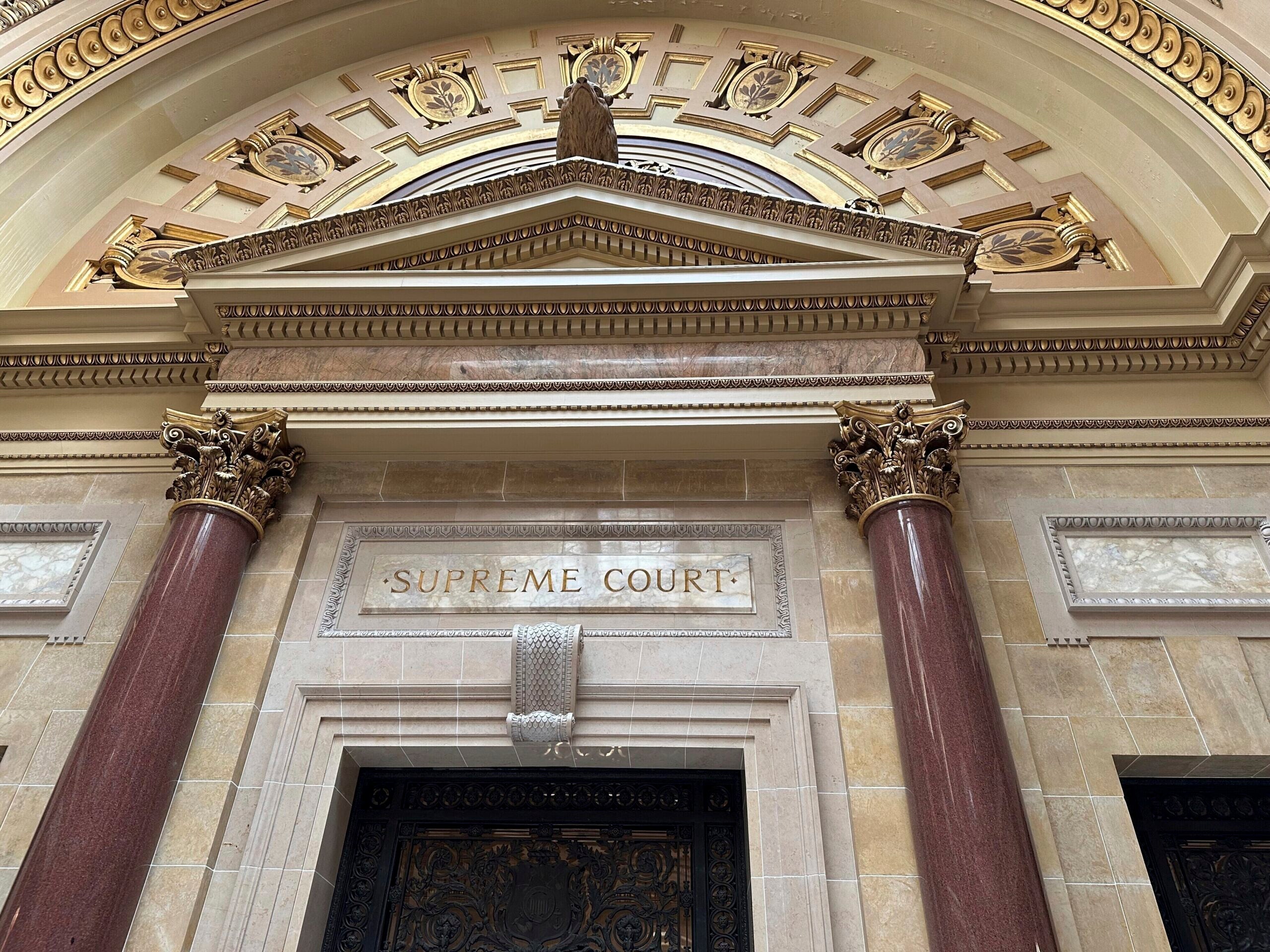A new justice joined the Wisconsin Supreme Court over the weekend, and experts are watching closely to see how partisan dynamics on the state’s highest court may shift just as it’s poised to rule on several high-profile cases.
When liberal Justice Jill Karofsky was sworn into the court over the weekend, its partisan makeup shifted from a 5-2 conservative majority to 4-3.
Some have pointed out that the narrower conservative majority means better odds for liberal rulings from the court, because only one conservative would now need to defect from his or her colleagues to swing an opinion.
News with a little more humanity
WPR’s “Wisconsin Today” newsletter keeps you connected to the state you love without feeling overwhelmed. No paywall. No agenda. No corporate filter.
But two experts believe the slimmer majority may lead to conservative justices tightening their ranks.
Alan Ball, a professor of history at Marquette University who runs SCOWstats, a blog that tracks and analyzes the court’s decisions, said it’s possible conservative justices will show more of what he calls “bloc cohesion” in their coming term.
In an April analysis for SCOWstats, Ball found justices Rebecca Bradley and Brian Hagedorn were more likely than other conservative justices to break from their ideological colleagues in the past court term.
Ball found longtime conservative justices Patience Roggensack and Annette Ziegler ruled the same way on 96 percent of cases, but Bradley only agreed with Roggensack 67 percent of the time and Ziegler 60 percent. Hagedorn agreed even less often — only 64 percent of the time with Roggensack and 55 percent with Ziegler.
“Brian Hagedorn seems to be the least predictable,” Ball said in an interview. “He’s the one that seems most likely to go his own way — the one (who is), to put it another way, most difficult for conservatives to keep in the fold.”
Notably, Hagedorn broke from his fellow conservatives in the court’s ruling on the Evers administration’s safer-at-home order in May.
Douglas Hoffer, an Eau Claire attorney who closely follows the court and writes about it on SCOWISblog, agreed with Ball.
“I think it is likely there will be less split decisions (in the coming term),” Hoffer said.
Hoffer noted there have been a number of complicated rulings from the court recently, including one issued in July about the governor’s veto powers. In that case, a majority of justices agreed on an outcome, but not why they reached it. He said that kind of fractured ruling leads to confusion.
“It’s very difficult to instruct your client on what the law is when you can’t get the majority of the state Supreme Court to agree on what the law is,” he said.
The newly restructured court is already poised to hear at least one high-profile case. It is set to hear arguments in the coming months in a challenge brought by a conservative advocacy group against the Wisconsin Elections Commission that could remove up to 129,000 voters from the state’s voter rolls. The court agreed to take the case in June but said it will not hear oral arguments before Sept. 29.
Any legal challenge to Gov. Tony Evers’ new statewide mask mandate would go before the court as well. Some speculate Evers timed his order to align with Karofksy’s ascension to the court and its new partisan balance, but he rebuffs the claim.
There is also possibility that the court could take up a legal challenge to Wisconsin’s next set of legislative district maps, which are scheduled to be drawn next year.
Wisconsin Public Radio, © Copyright 2025, Board of Regents of the University of Wisconsin System and Wisconsin Educational Communications Board.







